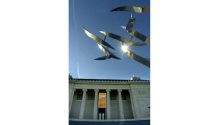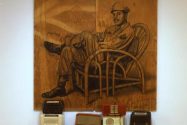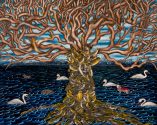“Roy Lichtenstein sculpture may replace Lin Emery sculpture at NOMA,” The Times-Picayune
The glinting silver sculpture by Crescent City artist Lin Emery that has stood in the reflecting pool in front of the New Orleans Museum of Art for years has been removed to make room for something new. Word among the city’s art scene insiders is that a newly acquired sculpture by pop master Roy Lichtenstein is slated for the premier spot.
In an email statement, NOMA director Susan Taylor acknowledged that the museum hopes to install “another major work by another major artist by the beginning of 2014,” but she did not confirm the identity of the sculptor.”
“The Lin Emery sculpture was recently removed from the pool in front of the museum in order to commence renovation and repair of the pool,” Taylor wrote. “We are delighted to be able to move her work into the Besthoff Sculpture Garden where, after conservation, it will be placed along the lagoon in visual proximity to the George Rickey and Kenneth Snelson sculptures – a fitting and permanent context for her work. Lin will also be honored at Love in the Garden on September 27 and, later in the fall, with an exhibition celebrating her work.”









